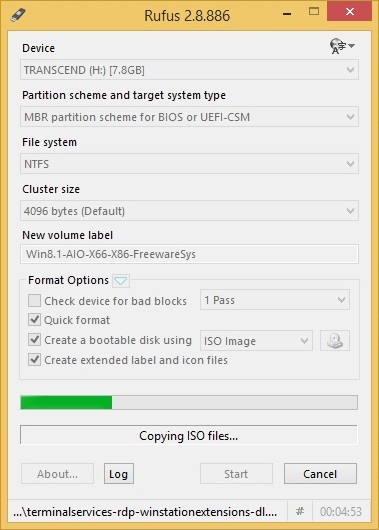

- #Create a bootable usb from windows 7 full#
- #Create a bootable usb from windows 7 software#
- #Create a bootable usb from windows 7 Pc#
- #Create a bootable usb from windows 7 iso#
#Create a bootable usb from windows 7 iso#
#Create a bootable usb from windows 7 full#
It allows you to perform the full set of disk management operations from the command line. Also, you can create a bootable USB stick with Windows 7 from the Windows 8 environment and vice versa.ĭiskpart is a console disk management utility which is shipped with Windows by default. However, you can create a USB drive with 32-bit (x86) version of Windows from a 64-bit edition of Windows. Use a 64-bit version of Windows to create a 64-bit USB stick. Important Note: You cannot create a bootable 64-bit (圆4) Windows USB stick from a 32-bit (x86) version of Windows. Then you can just copy and paste files from the virtual DVD drive to your USB stick.
#Create a bootable usb from windows 7 Pc#
Simply double click the ISO to mount it Windows 8 will create a virtual DVD drive in the This PC folder.
#Create a bootable usb from windows 7 software#
In Windows 8 and Windows 8.1, you don't need any third-party software to extract the ISO's contents to the USB flash drive: Windows 8 and Windows 8.1 have built-in support for ISO images. It creates a virtual drive which can mount ISO images and you can work with them like a regular DVD disk inserted in the physical DVD drive. Alternatively, there is Virtual CloneDrive software which is also free. The free and open source 7-zip archiver can perfectly extract the contents of the ISO image. You need to unpack the ISO file of Windows 7 setup to extract its contents. To format the partition, type format fs=ntfs quick, and then click ENTER.Warning! You will need to erase all data from the USB flash drive you use for this, so make a backup of the important data on it before you proceed. To select the partition that you just created, type select partition 1, and then click ENTER. To create a new primary partition on the USB flash drive, type create partition primary, and then click ENTER. This command deletes all data from the USB flash drive. Note the drive number or drive letter of the USB flash drive.Īt the command prompt, type select disk, where X is the drive number or drive letter of the USB flash drive, and then click ENTER. The list disk command displays all the disks on the computer.

In the new command line window that opens, to determine the USB flash drive number or drive letter, at the command prompt, type list disk, and then click ENTER. Open a Command Prompt window as an administrator. Insert a USB flash drive into a running computer. Restore or repair your server running Windows Server Essentials Restore a full system from an existing client computer backup To create a bootable USB flash drive for use in recovering or reinstalling Windows on a PC instead of a server, see Create a recovery drive.įor additional scenarios in which you may want to create or use a bootable USB flash drive, see the following topics:


 0 kommentar(er)
0 kommentar(er)
